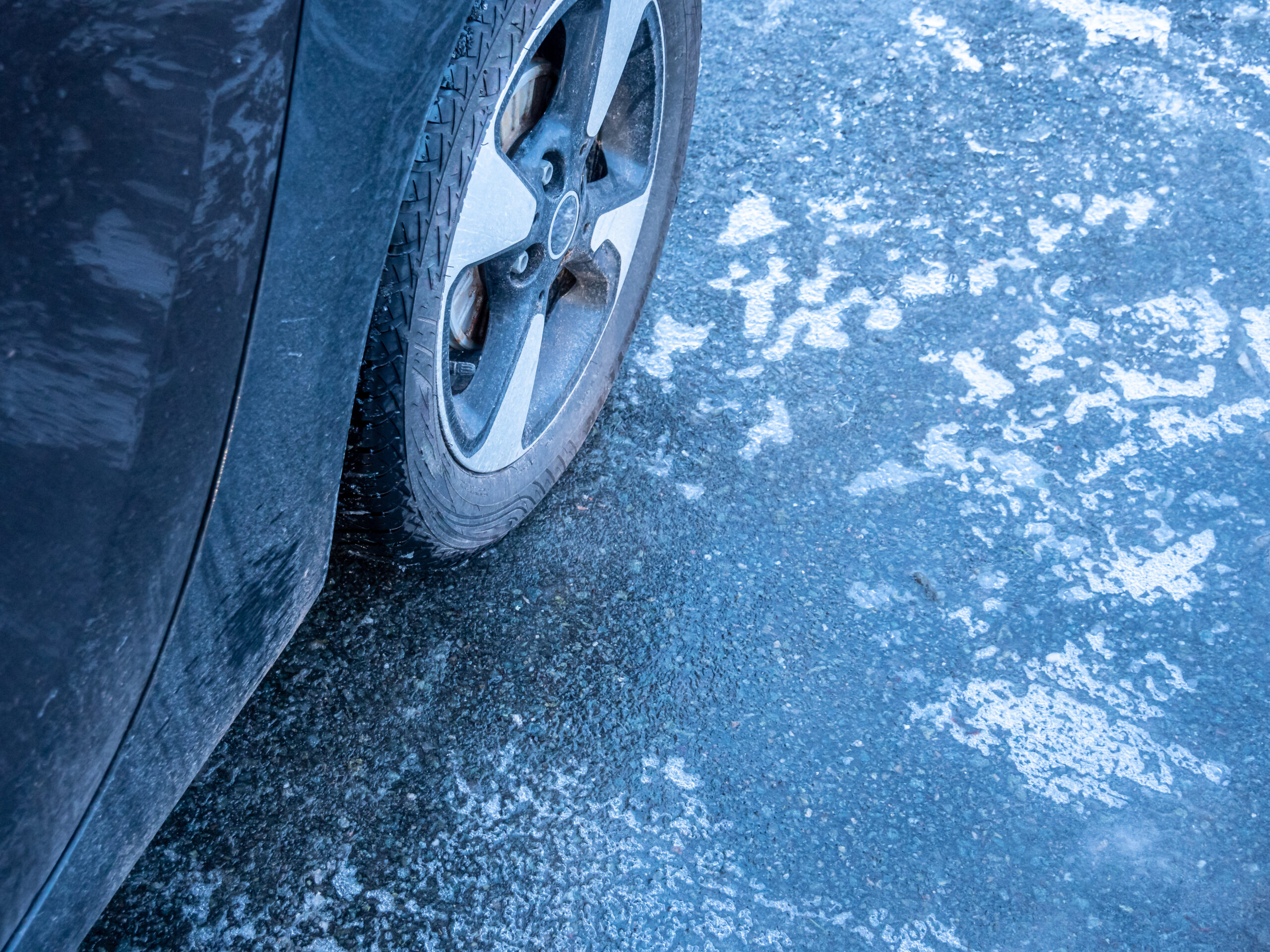Black ice is a thin layer of transparent ice that forms on roads, and often hides in plain sight, blending with the pavement. Unlike regular ice, which appears white because of the air bubbles trapped inside, black ice forms under very specific conditions that reduces air pockets, which makes it invisible. This makes it incredibly dangerous, turning seemingly ordinary roads into dangerous skating rinks for drivers
With knowledge and caution, winter drivers can navigate these invisible ice patches with confidence and get to where they need to go safely.
The Science of Black Ice
Black ice typically forms during freezing temperatures, often around bridges, shaded areas, and low-lying dips where water tends to pool. When these puddles freeze rapidly, they create a thin, glassy layer that lacks the air bubbles and snow cover that usually make ice more visible. This is why black ice can lurk even on roads that appear dry.
How to Spot Black Ice
Here are some important signs to watch out for:
- Shiny patches on the road, especially in shaded areas or near bridges.
- Temperatures hovering around freezing, even if the road appears dry.
- Oncoming traffic slowing down or swerving unexpectedly.
- A sudden loss of traction or a “spongy” feeling under your tires.
Driving on Black Ice
If you encounter black ice, staying calm and taking the right steps is crucial. Other things to keep in mind include:
- Slow down significantly. This is the most important rule of black ice driving. Reduce your speed well below the posted limit, giving yourself more time to react and maintain control.
- Avoid sudden maneuvers. Abrupt braking, accelerating, or turning can send your car into a dangerous slide. Steer smoothly and steadily, keeping your movements deliberate and controlled.
- Pump the brakes gently. This allows your tires to maintain some grip and prevents them from locking up completely. If you need to brake, do so cautiously and avoid slamming on them.
- Focus on steering in the direction of the slide. If your car starts to slide, resist the urge to overcorrect. Instead, gently turn the steering wheel in the direction of the slide to regain traction.
- Maintain a safe distance. Leave a good amount of space between you and the vehicle ahead, giving yourself room to maneuver without risking a collision.
- Use cruise control cautiously. Avoid using cruise control in freezing temperatures, as it can make it harder to react quickly to changing road conditions.
- Be extra careful at night or during foggy conditions. Visibility is already reduced in these situations, making it even more challenging to spot black ice.
Proper car maintenance before hitting the road in winter weather can significantly increase your safety by preventing accidents or scary situations.
Car Accident Support from IDG Legal
If you are ever caught in bad weather conditions and get into an accident on the road, we can help. IDG Legal offers rideshare drivers access to a trusted network of lawyers who are skilled in these types of accidents, and workers’ compensation from The Black Car Fund.
If you need immediate help, tap below and fill out a form.






